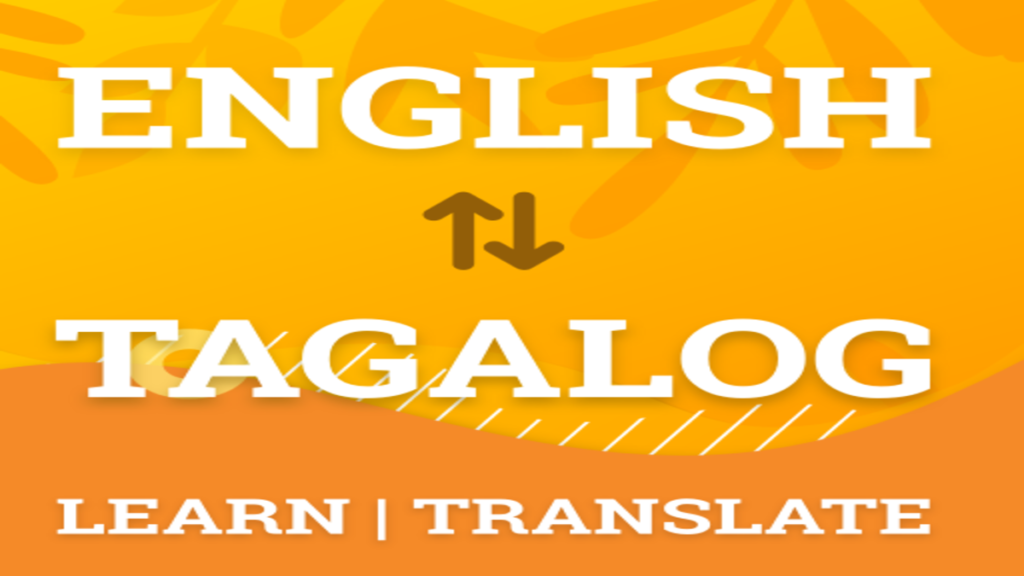Languages serve as bridges between cultures, enabling people from different parts of the world to communicate, exchange ideas, and understand each other. English and Tagalog are two languages that play an important role in this global conversation. English is widely spoken around the world and serves as the lingua franca in many international contexts, while Tagalog is the official language of the Philippines.
In this article, we’ll explore the technology and intricacies of English to Tagalog translation, as well as the cultural and linguistic aspects that make this an exciting endeavor. Importance of Translating from English to Tagalog An archipelago of more than 7,000 islands, the Philippines has a rich cultural heritage and a diverse linguistic landscape. Tagalog is the official language, but many other languages and dialects are spoken on the island. On the other hand, English is a second language for many Filipinos and plays an important role in education, business and government. Translating from English to Tagalog is essential for several reasons.

1. Cultural Exchange: Translation facilitates cultural exchange, enabling people of diverse backgrounds to appreciate Filipino literature, music and art, and vice versa.
2. Business Opportunity: In a globalized world, businesses can translate their content into Tagalog to reach a wider Filipino audience and effectively engage with potential customers.
3. Education: Teaching materials translated from English to Tagalog are essential to ensure that all Filipinos, regardless of their proficiency in English, receive a quality education. English to Tagalog translation challenge Translating between languages is not without its challenges, especially when the languages belong to different language families. English and Tagalog are very different in terms of vocabulary, grammar and sentence structure.
Here are some common challenges faced by English to Tagalog translators.
1. Word order:
Tagalog follows subject-verb-object (SVO) word order, which is different from subject-verb-object (SVO) or subject-object-verb (SOV) word order in English. The translator has to restructure the sentence accordingly.
2. Linguistic Aspects:
Tagalog has a rich system of verb conjugations based on linguistic aspects (perfect, continuation, etc.) that do not exist in English. Translators must accurately express these nuances.
3. Cultural Sensitivity:
Translators should exercise cultural sensitivity so that idioms, metaphors, and culture-specific references are properly adapted to the Filipino context.
4. Loanwords:
English has had a great influence on Tagalog and has incorporated many loanwords from English. Translators must decide whether to keep these loanwords or replace them with their native Tagalog counterparts. Tips for effective translation from English to Tagalog
1. Understand the Context:
A thorough understanding of the original text and its intended audience is critical to producing an accurate and culturally relevant translation.
2. Provide clarity:
Aim for clear and concise translations that effectively convey your message. Avoid overly literal translations that can confuse the reader. 3. Use a native speaker: To ensure the highest quality translation, use a native Tagalog speaker whenever possible or hire a professional translator who is fluent in both languages.
4. Stay up-to-date:
Stay up-to-date with evolving language trends and cultural shifts to create translations that resonate with modern readers. As the world becomes more and more connected, the demand for English to Tagalog translation services continues to grow. Whether translating legal documents, marketing material or literature, the importance of a qualified translator cannot be overemphasized.
Here are some additional insights to keep in mind as you embark on your English to Tagalog translation journey.
1. Adapting to Regional Differences: The Philippines is a diverse country with different languages and cultures depending on the region. Depending on the target audience, translators may need to adapt their translations to specific regional dialects or language variations. This level of attention ensures that translations resonate with local audiences.
2. Transcreation for Marketing: Marketing content is often based on creative and compelling language. In such cases, translators may need to go beyond mere translation and engage in transcreation. It’s all about redesigning your message in a way that retains its emotional impact and appeals to a Tagalog-speaking audience, even if it involves some creative freedom.
3. Technical Expertise: Translating technical documents or specialized content requires a deep understanding of the subject matter. To ensure accuracy, translators may need to research terminology and work closely with subject matter experts.
4. Consistency is key: It’s important to maintain consistency of terminology and style throughout your document or project. Creating a glossary and style guide will help you maintain consistency throughout your translations.
5. Proofreading and Quality Assurance: Like any document, translations benefit from thorough proofreading and quality assurance checks. It is important to check the grammar, spelling, and cultural relevance of the translated text before completing your work.
6. Continuous Learning: Languages are constantly evolving and keeping abreast of linguistic trends and changes is critical to the professional development of translators.
Attend workshops, forums and language courses to improve your translator skills and knowledge. In summary, translating from English to Tagalog is a fascinating journey that requires more than just language expertise. It requires a deep understanding of the cultures, backgrounds and complexities of both languages. Translators who can successfully bridge the gap between English and Tagalog play an important role in facilitating cross-cultural communication and opening doors to education, commerce and cultural appreciation.
As we continue to live in a world where language serves as the thread that weaves the fabric of the global fabric, the importance of a competent translator cannot be underestimated. Her ability to navigate the complexities of translation while preserving the essence and cultural nuances of both languages is a testament to the power of language to bring people from diverse backgrounds together and create a more connected world. English to Tagalog translation is a bridge between two different linguistic worlds. This facilitates the exchange of ideas, culture and commerce, fostering understanding and cooperation between the English-speaking community and the dynamic nation of the Philippines. Translators continue to grapple with the challenges and nuances of this complex process and play a key role in building connections and maintaining the richness of both languages.

